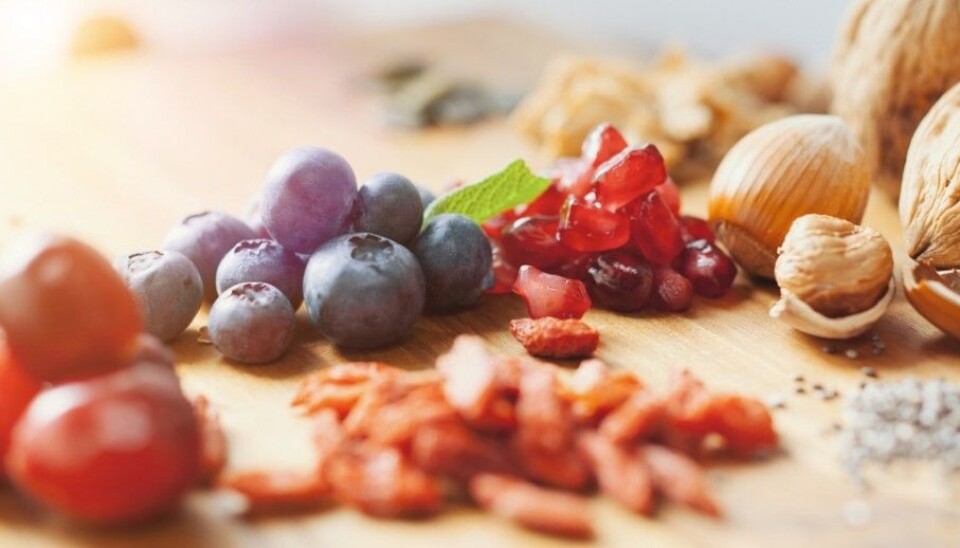
Researchers debunk common food myths
More and more people are concerned that certain foods may be poisoning us, and that we have to eat purer, more natural food. But food scientists have different concerns than the general public.
If “we are what we eat,” as the old saying goes, what should we be eating?
Two Norwegian food researchers have decided to tackle this question by examining the differences between what people think makes for a safe, healthy diet, and what food scientists recommend.
Their findings are documented in their book “Bra mat — Hva forskningen forteller oss” (Good Food - What Research Tells Us).
Authors Gro Haarklou Mathisen and Astrid Bjerkås have both worked for many years in food sciences. Mathisen holds a doctorate in toxicology and works for the Norwegian Scientific Committee for Food and Environment, which carries out risk assessments for the Norwegian Food Safety Authority and the Norwegian Environment Agency. Bjerkås works for the Norwegian Veterinary Institute, which is a national biomedical research institute that studies animal health, fish health and food safety.
They wrote the book as private individuals, however, because they wanted to address food myths and share the science behind what is known about good, safe food.
What should we eat or not eat?
The two authors interviewed a variety of food and nutrition researchers and asked them to summarize the science behind what foods are good for us, and foods that we should be more careful about.
“We have become more and more concerned with what we should not eat,” says sociologist Annechen Bahr Bugge in the book. “The list of ‘no’ foods is getting longer. And we now say something about ourselves through the food we choose not to eat.”
Additives, pesticides not that worrisome
Many people worry about food additives, but that worry is misplaced, the authors report.
"For a substance to be approved as an additive, it must be shown that there is no risk of negative health effects from the amount we consume in food or drink," says toxicologist Trine Husøy in the book.
Most researchers agree that if you have a varied diet, you won’t consume that many additives, Mathisen says.
There’s plenty of information out there encouraging consumers to be wary, however. For example, Esben Holmboe Bang, a superstar cook and chef of the Michelin-recognized Oslo restaurant Maaemo, told the Norwegian newspaper Dagens Næringsliv that “it's better to eat something that's not sprayed with poison."
But the benefits and risks of pesticides and fungicides are not that simple, according to toxicologist and former cancer researcher Edgar Rivedal. He points out in the book that fungus, which pesticides and fungicides can kill, can produce harmful toxins.
And it is not certain that pesticide residues in food represent a greater health risk than toxins from a fungus on the food.
We should be more concerned with pollutants
In the public debate, additives and pesticide residues often get more attention than environmental poisons in food — except when it comes to fish.
Everyone knows that we should eat fish because it is healthy — the research here is quite clear. But fish can contain environmental contaminants like dioxins, PCB and mercury — the research here is quite clear, too.
But senior researcher Helle K. Knutsen, from the Norwegian Institute of Public Health, told the book authors that careful calculations show that most Norwegians do not consume harmful levels of environmental contaminants from fish, if you consider their eating habits and the levels of contaminants in store-bought fish. She says, however, that she remains aware of the contaminant issue even while she recognizes the health benefits of eating fish.
Pink hamburger merits concern
Many gourmet burger restaurants serve their hamburgers very rare, so they are pink inside. And many customers like this. But there is a big difference between a pink steak and a pink hamburger, the researchers interviewed for the book warned.
A steak is a muscle that normally does not have bacteria inside it. Any bacteria that are on the surface of a piece of steak die when you cook the outside. For that reason, you can eat rare steak. But hamburger meat is chopped, which means bacteria may find their way inside the meat. To kill bacteria, the hamburger must be completely cooked through.
“The E.coli bacterium, also called the hamburger bacterium, has actually caused deaths in Norway,” Live L. Nesse, a senior researcher at the Veterinary Institute says in the book.
Super food is not that super
Food blogs and weekly magazines like to extoll the magic properties of goji berries, which are full of antioxidants and chia seeds, which are supposed to energize you.
But nutritionist Tine Sundfør, who was interviewed for the book, says super food is not worth the money.
The same goes for many current food trends, such as the raw food diet, juicing, fermented foods and gluten-free diets.
“There is no research that supports the health benefits of these food trends for the average person," says Sundfør. “If you follow them slavishly and only eat what is called super food, you can, at worst, miss out on important nutrients.”
What we need is to eat is a variety of foods, she said.
“It is not that the more you eat of a single nutrient, the better, because there is a limit to everything. Too much of a good thing, even if it is healthy, can be too much,” she said.
-------------------------------------
Read the Norwegian version of this article at forskning.no.































